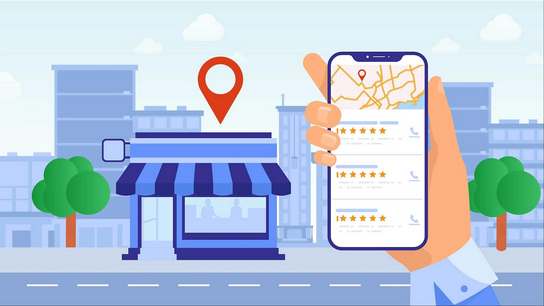
Local SEO
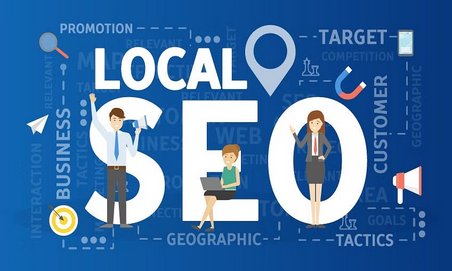
One of the most frequently asked questions is whether you need a local SEO. And it’s understandable, you’re busy, it is time-consuming and you have to look at your budget as well.
But before you make a final decision, let this article be a source of changing your mind in a way that is the most beneficial for you.

Your company’s presence in Google’s local search results is increased by a type of search engine optimization (SEO) known as local SEO.
Any company with a physical presence or that serves a specific region might gain from local SEO. Local SEO can help you expand your business if a map pack—a scenario in which three listings relevant to your organization display beneath the map—appears when you search Google for any relevant terms.
But first, you must understand how Google works in order to understand local SEO.
What Changed Over Time With Search Engines?
Using websites was easy in the early days of the internet since there weren’t many of them. As the Internet expanded, search engines were created to assist users in finding the websites they were seeking more quickly.
When you enter a term into the search engine, that term is matched to web pages that contain the specified term. Similar tactics were employed by Google, but it quickly gained an advantage over rivals when it became the first search engine to identify trustworthy and authoritative websites based on linkages between them.
Hundreds of factors, both on and off your website, are now taken into consideration by Google when deciding whether to show a website as a search result.
Your “digital footprint” is the elements with specific weights or values that search engines combine to produce results. Whether or not Google’s top search results include you depends on your digital footprint.
How Does Google Work?
Google examines trends in a number of website signals, or ranking variables, to deliver a list of websites that match your search. Most people need to realize that typing a search query into Google’s search bar doesn’t immediately perform a live web search. In fact, it looks for cached duplicates of every website Google finds.
This replica’s name is Google Index. Google builds its index using “spiders”, small programs that crawl the web. Each spider behaves the same. Start with one page, follow links on that page, and scan subsequent pages for information.
When web content is crawled, Google’s servers store and index it. The size of a spider’s work is amazing. They keep crawling trillions of pages at lightning-fast rates. In order to find new websites and links fast, this keeps the index as current as feasible.
How will Google Rank Search Results?
Google ranks lots of or thousands of internet sites instantly employing a form of techniques. These operation area units are observed as algorithms. As soon as a person searches for a specific topic on Google, an algorithm searches the index and presents a list of pages that are pertinent to their query in organic results. These support the connection, prominence, and recognition provided by inward links, those results are unit designated and hierarchical.

The formula examines a variety of each on- and off-site variable to choose whether or not websites offer content pertinent to your search. The list is dilated to incorporate all pertinent websites, and it’s then ordered by prominence.
The formula chooses that websites best reply to your search question, all over again referencing the various on-the-scene and off-site parameters, and people websites area unit bestowed at the highest of the search results.
Enhancing your SEO affects your website’s connectedness, prominence, and link quality aspects. If the acceptable digital footprint parts are unit optimized, your website can seem higher in additional search results.
Local SEO Follows A Unique Pattern.
How about the outcomes of local organic searches? Google discovered that individuals looking for particular sorts of companies need local results after examining user behavior throughout trillions of searches. The proximity issue, which could be a fancy approach of claiming that Google considers your location after you seek a neighborhood keyword, is an element of Google’s native search formula as a result (a question with native intent). Even once the searcher excludes a town name or “near Maine,” this still happens.
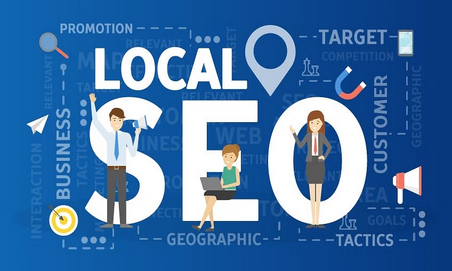
For instance, after you seek “pizza delivery” whereas, at work, an inventory of restaurants on the brink of your geographic point is displayed within the native SERPs (search engine result pages). However, the results are very different if you undertake continuous search reception. This is smart as long as you need a neighborhood pizza pie delivery. native search has been accessible for a little time, however, its use was restricted due to most people completely using desktop computers. native SEO has become crucial for the success of any company supplying native products or services still as native marketers because of the recent explosion in the mobile web property.
Why Is Local SEO Vital For My Bussiness?
Local SEO is essential if your company caters to a certain town or region. Furthermore, it’s probably going to be even more crucial in the future. Gaining additional local presence is beneficial even if you already employ an organic SEO strategy. You really don’t want to pass up the chance to get the attention of neighboring individuals who could become your consumers. The work and potential expenses involved are the only major arguments against engaging in local optimization. But you shouldn’t worry about that; in fact, you might already be putting a local SEO strategy into practice without you realizing it, depending on the keywords and techniques you’re utilizing!
Utilize These Local SEO Strategies.
Start following these steps to implement a local SEO plan for your business. a website’s localized content. The creation of content for your website that displays your location is one of the primary local search engine optimization strategies. There are numerous approaches to this. First, check that your website makes it simple to find your name, phone number, and address. The contact page, header, and/or footer of a website are typically where businesses display this information.
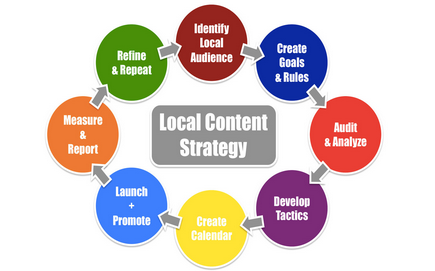
The next step is to write blog and website material with a local keyword concentration. For instance, you may use the term in the content of your service page if you were a dentist trying to rank for the keyword “NYC Dentist.” One of the most crucial components of local SEO is adding locations to your keyword optimization.
Watch out: keyword stuffing is not permitted! A common error made by experts who are launching their first local SEO campaign is putting too many keywords into their websites, blog posts, and online listings. Using this method results in content and listings being devalued by search engines. Instead, naturally include the keywords in your article. Don’t forget to include them in the headings, meta description, and alt tags for your images as well for the best results.
Take Control Of Your Google Business Profile.
Google is the most widely used search engine in the entire globe, with a whopping 92% market share. It is imperative that you claim and enhance your free Google Business Profile in light of this (formerly known as Google My Business). When a user types in their business name, address, contact details, or other pertinent local keywords, this listing will come up on Google. These listings can be seen on Google Maps as well. Include as many facts about your company as you can to make the most of this free Google account and map listing. Users must at the very least be aware of your name, address, and contact information. Consider this to be your “NAP” data. Along with your contact details, Google Business Profile also enables you to add important business information like your website, business hours, customer reviews, and more.
Complete Internet Directories & Listings
Listing websites and company directories abound on the internet. These websites serve as online directories of businesses in a certain sector, geographic area, or business type. These websites show your address and other pertinent local company details to interested people, so they might be helpful for reaching out to local clients.
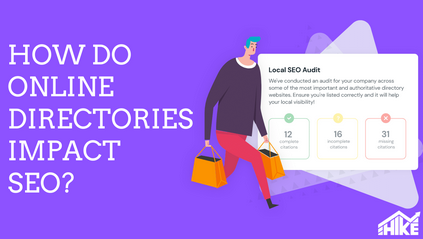
Be sure to fill out these listing and directory profiles as completely as you would with your Google Business Profile listing. Every time, be sure to include your name, address, and phone number. You could wish to sign up for Bing Places, Yelp, Whitepages, and Foursquare, among other well-known listing websites.
Benefit From Customer Reviews.
Did you know that 49% of local consumers trust online reviews and personal recommendations equally? It is simple to see how it helps any optimization method succeed. Local SEO tactics will help you increase your visibility in search engines and map listings, so we want to do our best. Do you wish to have a poor first impression while ranking highly in search results? 75% of users say they think positively about a business when they see reviews describing a positive experience. So it really helps generate genuine positive customer reviews.
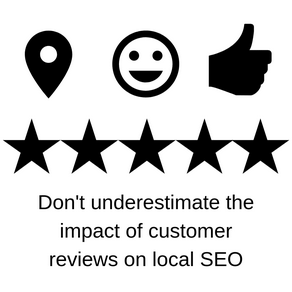
Your review isn’t just for Google. Some companies focus on getting reviews on popular sites like Yelp and Facebook. However, there may be other niche sites that your business can leverage. Consider requesting evaluations from your consumers on niche or focused review sites. You may send customers to TripAdvisor, for instance, if your company runs a restaurant or hotel. Or, if your business is wedding-related, try getting reviews on The Knot. Find the best review site for your company by doing some research. In addition to increasing his online presence, all of these review pages include a link back to his website for your company. These backlinks drive traffic to your site, improve your online authority, and help you reach your local SEO goals.
Start Your Local SEO Campaign.
It’s time to develop and carry out your strategy now that you know why and how local SEO might benefit your company. Start by following our advice, then keep an eye on your presence in local searches.
What Do You Need To Get Started With Local SEO?
When starting a local SEO project, there are four important things you need to know before evaluating and developing a local business strategy.
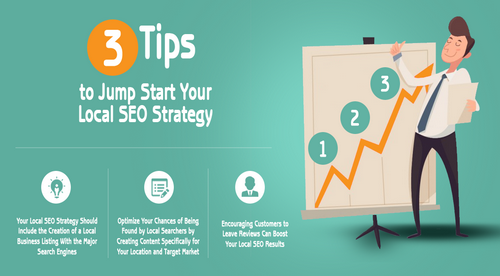
1) Guidelines For Listing Your Business On Google
The Guide to Getting Your Business Visible on Google is a must-have for local business marketers. It teaches you how to imagine your company as defined by Google, and how to create a “former Google My Business” via your Google Company Profile.
How to avoid costly mistakes. Violating our guidelines can result in loss of ranking, various penalties, and even the removal of your local listing. Bookmark the guides, read the terms they contain, and refer to them often, as Google often adds new rules and instructions. The most important guidelines to know at the start of your trip are those that describe eligibility for Google Places profiles. According to Google’s guidelines, each location must meet this requirement:
“For a business to have a good business profile on Google, it needs to engage with the customer within a certain period of time.”
In other words, a business whose location does not offer in-person customer service during business hours does not qualify for the Google Business Profile and cannot run a full local search marketing campaign. Local SEO depends on personal service in-store, on the roadside or with the customer.
Once you’ve decided on the suitability of any location you plan to market in, the guide will walk you through the various fields on your Google Places profile, including how to name your business. what to do with its address, department, and potential practitioners, how to set up hours, and more.
2) Business Basic Data
Check your local presence for free. Review basic business information with the help of key personnel at each site. Verify that you have each location’s correct name, operating hours and other pertinent information. Ensure that there is complete agreement on the canonical status of this data between all relevant departments of the company. Conflicts plague local search marketing campaigns from start to finish. Skipping this step can cause problems later. Copy this simple free spreadsheet and assign a business number/code to each business location and fill in all the fields. If your advertised brand qualifies for a cross-functional or cross-functional listing according to Google’s guidelines for listing your business on Google, you’ll also need to fill out the columns for each unit.

Add fields to the table as needed. For example, if your business is a franchise, consider adding a field for your franchisee’s contact information so they can quickly contact you if needed. Finally, if your business has 10 or more locations, you can use Google’s bulk upload feature. That is, fill out the bulk upload spreadsheet.
3) Clear identification of the business model
Use the extra time to carefully define your business model. Business models include:
- A physical location, such as a retail store or restaurant, that customers can visit.
- A service area company (SAB), such as a plumber or catering company, travels to the customer’s location.
- A hybrid like a pizzeria that also offers takeout.
- At home, for example, a daycare center.
- Co-located/co-branded companies such as KFC/A&W chains.
- A multi-industry company such as a hospital or a car dealer.
- multi-practitioner enterprise, such as a real estate agency or a dental office.
- a mobile enterprise like a permanent food truck.
- ATM, kiosk, and other uncommon commercial structures.
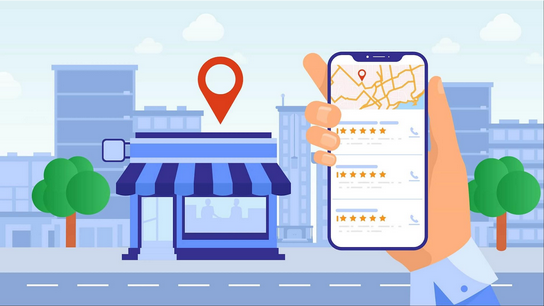
The guidelines for listing your business on Google have unique requirements and options for each model. We won’t reproduce the entire document in this guide, as it is subject to editorial changes – please take the time to read the entire set to make sure you know how to navigate Google’s online world.
4) Clear Statement Of Business Objectives
In some cases, your goal is to develop a variety of online (and possibly offline) properties in local business locations. You’ll see everything from websites to local business listings, email marketing, social media profiles, and report management. You can also focus on just a small part of your photo. But whether the task at hand is broad or narrow, setting goals, in the beginning, is the only way to measure success after the task is completed. It is usually best for the business owner to be able to formulate the goals by answering the following question:
What does success look like? Try to formulate your answer to this question:
- Increased foot traffic
- Increased calls
- Increased transactions
- Increased form submissions
- Increased directions requests
- Increased links
- A rise in favorable reviews
- An improvement in local pack visibility for keyword X
Stay away from vanity metrics like ‘I want to be #1’ and ‘I need more website traffic. After all, what most companies really want is increased profits. Moving from A to Z is where strategy comes into play, defining what tactics and messages lead to achieving stated goals, which in turn lead to higher returns.
Once all relevant contributors agree on a goal, set a schedule. Internal and third-party marketers must be very clear about creating realistic time estimates. It takes time for almost all local search marketing efficacy to reach full maturity. So try to avoid over-promising or under-delivering in the schedule you provide. You’re prepared to start your local SEO adventure now that you have your basic business information, are aware of your organization’s model and objectives, and have a solid understanding of Google’s recommendations.
Conclusion
Local search engine optimization should be used by every company having a physical location. Local SEO is not always easy, despite its importance. It calls for a wealth of time and knowledge of the various strategies and tactics that will make Google notice you. Ignoring local SEO is a serious mistake, especially if your business is based nearby. In the event that your site isn’t optimized when theirs is, it will be extremely simple for your rivals to surpass you. Fortunately, with a few tweaks to your site and some diligent work, you can reclaim the upper hand.
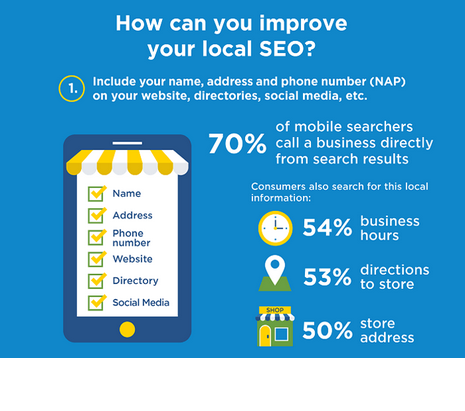
There are several techniques to improve your results, from making sure that your NAP is the same everywhere online and obtaining excellent reviews to link building and increasing the number of citations that you have. These techniques might enable you to outrank your rivals and take the top spot in the search results. The local pack or carousel is the coveted spot for most physical businesses, and SEO is your greatest shot at getting there. Don’t miss the opportunity to watch your sales skyrocket. While it could take some time to fully optimize your website for local search phrases, the effort will be well worth it.
Don’t overlook local SEO whether you decide to manage your own search engine optimization or employ a specialist in the area. It would be a grave error not to utilize all the advantages that local optimization may offer your website since it can be a remarkably potent force on your side.

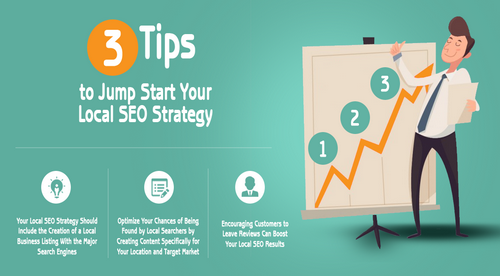
Leave a reply